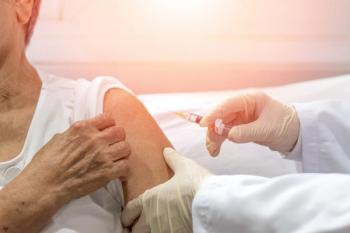Over 90% of independent pharmacies are considering not selling some or all of the 10 drugs selected for Medicare price negotiations come January 1, 2026, according to survey data released in a National Community Pharmacists Association (NCPA) news release.1
With the negotiated prices for these drugs going into effect in 2026, independent pharmacists are hoping for a better reimbursement structure. If a desirable reimbursement structure is not offered to these pharmacies, owners and managers will be unable to afford dispensing any of the negotiated medications.
“Lower prices won’t mean much to people who can’t find the drugs,” said NCPA CEO B. Douglas Hoey, RPh, MBA.1 “Unfortunately, the new CMS guidance fails to ensure fair reimbursement for pharmacies that dispense the drugs. It also fails to ensure timely reimbursement. Pharmacists are health care providers and pharmacies are also businesses that can’t afford to lose money on prescriptions they dispense. The president’s entire program is in jeopardy if that isn’t addressed.”
Key Takeaways
- The NCPA surveyed over 4000 independent pharmacy owners and managers for their thoughts on the 10 drugs selected for Medicare price negotiations going into effect in 2026.
- Over 90% are considering not selling some or all of the 10 drugs selected.
- Because of declining reimbursements from PBMs, independents believe the price negotiations will lead to depleting access to the 10 selected drugs.
The Medicare drug price negotiation saga began with the institution of the Inflation Reduction Act of 2022. Once signed, the process was set into motion with the Centers for Medicare & Medicaid Services (CMS) choosing the first 10 drugs covered under Medicare Part D to enter the first cycle of negotiations.2
Drugs for diabetes, cancer, and heart failure were among those in the first round of negotiations, with final prices settled in August 2024; prices will go into effect in 2026. Upon the settlement of drug price negotiations, CMS claimed that—if the prices went into effect in 2023—beneficiaries would have saved an estimated $6 billion in out-of-pocket costs for the 10 drugs.
READ MORE: Prices Released for First 10 Drugs Selected in Medicare Negotiations
However, come 2026 when the negotiations are actually realized, the NCPA and a number of independent pharmacists believe those savings may not be possible.
“NCPA estimates pharmacies that dispense drugs in the program will have to tie up $27,000 of their own money every month to stock the drugs and then wait a month or more for manufacturer refunds to make the pharmacy whole. For many pharmacies, the resulting cash flow crunch will be too much for them to absorb in an already difficult payment environment,” wrote the NCPA.1
The NCPA surveyed around 4135 independent pharmacy owners and managers from September 24 to October 11 and received 467 responses. Respondents were asked about various topics regarding the drug price negotiations including the program itself, contracting with Part D pharmacy networks and pharmacy benefit managers (PBMs), direct and indirect remuneration (DIR) fees, glucagon-like peptide 1 (GLP-1) agonists, and ADHD drug supplies.3
Among survey respondents, 51% are strongly considering and 40% are somewhat considering not stocking the 10 drugs, making up over 90% of independent pharmacists who are concerned about stocking life-saving medications that their patients need. When considering Medicare Part D contracts for 2025, 73% said they haven’t finalized them and open enrollment has already begun, leaving pharmacies with a difficult decision that needs to be made before enrollment ends.
“In July 23 testimony on Capitol Hill, executives from Express Scripts, CVS Caremark, and OptumRx made several questionable claims about their interactions with patients and unaffiliated pharmacies. Express Scripts’ president, for example, said that ‘pharmacies can always redline a contract back to us and negotiate,’” wrote the NCPA.3 With the comments of PBM Express Scripts president in mind, 98% of survey respondents said they were unsuccessful in redlining and negotiating contracts with Express Scripts prior to July 23, and 96% have been unsuccessful after those remarks were made.
“The PBMs offer take-it-or-leave contracts. They don’t negotiate because of their dominant market share, which is one reason why the FTC is investigating their business practices,” continued Hoey.1 “Pharmacists who want to keep their patients are often forced to dispense prescriptions for less than their cost to acquire the medicine. That’s why there are now 10 percent fewer pharmacies for patients to choose from, and it’s why many are considering dropping out of the Medicare Part D program altogether.”
Moving to other medications not included on the negotiation list, 73% of survey respondents said they are contemplating or have already stopped stocking and selling GLP-1 agonists because they are losing money on those medications or experiencing shortages. Regarding ADHD medication, 94% reported Adderall or generic shortages.3
Finally, 70% said they are struggling to fill open staffing positions at independent pharmacies. As far as the types of pharmacy employees in demand, technicians are in the highest demand at 80%, followed by pharmacists (42%), front-end staff (39%), and delivery drivers (19%).
“Pharmacists are in business to help patients get the medications they need and use them safely and effectively. But, like all businesses, they need to be paid more than their cost to keep their doors open and serve their communities,” concluded the NCPA’s news release.1
READ MORE: Majority of Savings from CMS Price Negotiations Comes From 3 Drugs
Pharmacy practice is always changing. Stay ahead of the curve: Sign up for our free Drug Topics newsletter and get the latest drug information, industry trends, and patient care tips, straight to your inbox.
References



















































































































































